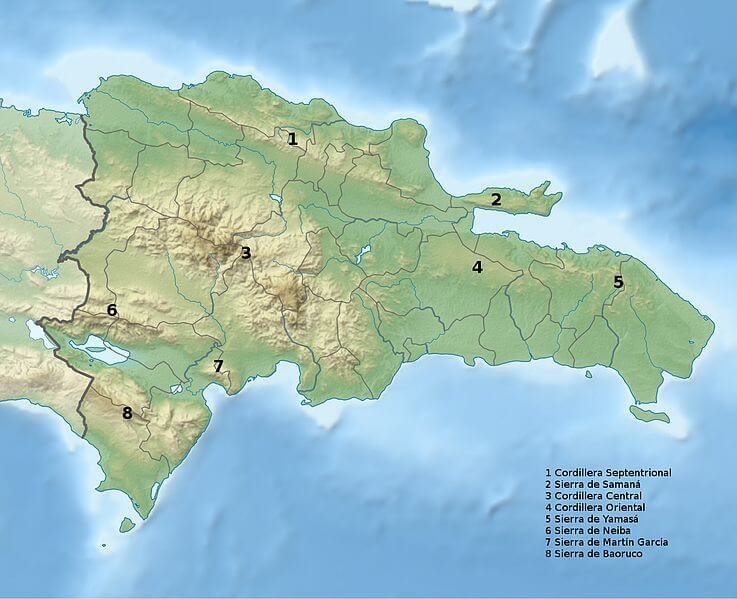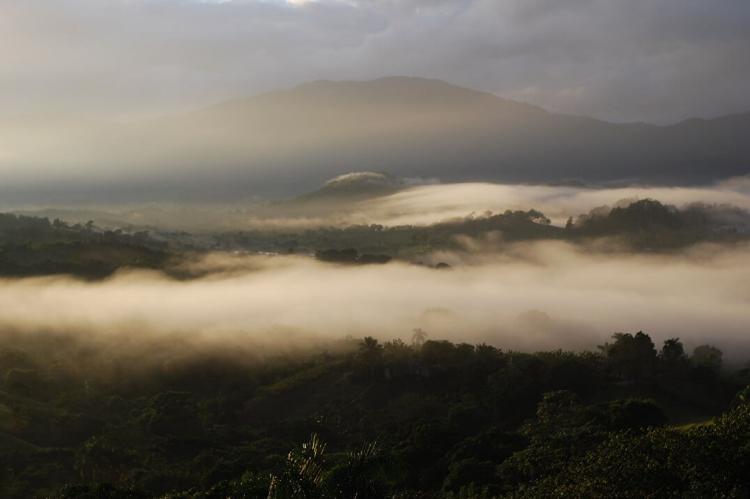The Cordillera Central and Pico Duarte: Guardians of Hispaniola's Natural Heritage
The Cordillera Central shapes the Dominican Republic's landscape, climate, and biodiversity. Its rugged peaks, including Pico Duarte, the nation's highest, and lush valleys showcase the island's natural heritage, while José Armando Bermúdez National Park highlights the country's commitment to conservation.
The Cordillera Central and Pico Duarte: Guardians of Hispaniola's Natural Heritage
The Cordillera Central, a series of parallel mountain chains spanning the central part of the island of Hispaniola, serves as a majestic centerpiece of the Dominican Republic's landscape, shaping its terrain, climate, and biodiversity. From its rugged peaks to its lush valleys, this mountain range offers a glimpse into the island's rich natural heritage. Nestled within this awe-inspiring landscape lies Pico Duarte, the highest peak in the Dominican Republic and a symbol of enduring natural beauty and geological prominence.
Geological Formation and Landscape
Stretching from the plains between San Cristóbal and Baní to the northwestern peninsula of Haiti, the Cordillera Central boasts diverse landscapes characterized by rugged terrain, steep slopes, and numerous peaks and valleys. Its highest elevations are in the Pico Duarte and Valle Nuevo massifs, where towering peaks dominate the skyline. The range's topography influences the climate of the Dominican Republic, with prevailing winds from the northeast encountering the mountains and creating an orographic effect that results in increased rainfall on the northern slopes and drier conditions on the southern slopes.
Biodiversity: Flora and Fauna
The Cordillera Central is renowned for its rich biodiversity, harboring diverse ecosystems, including pine forests, cloud forests, and montane rainforests. The cloud forests at higher elevations are exceptionally biodiverse, boasting many endemic plant and animal species. Notable flora species include the Hispaniolan pine, Hispaniolan oak, and Hispaniolan mahogany, while fauna species such as the Hispaniolan solenodon, Hispaniolan parrot, and Hispaniolan emerald add to the region's ecological significance. The range is home to numerous endemic plant and animal species, including various orchids, pine trees, and the Hispaniolan hutia, a type of rodent.
Pico Duarte: The Majestic Peak of the Cordillera Central
Pico Duarte, often hailed as the crown jewel of the Cordillera Central, stands as the highest peak in the Dominican Republic, the island of Hispaniola, and possibly the entire Caribbean region. Just 85 kilometers (52 miles) from the lowest point in the Cordillera Central range, Lago Enriquillo, this towering summit commands attention with its imposing presence and storied history. Beyond its geological significance, Pico Duarte is culturally and environmentally important for the Dominican Republic. It symbolizes national pride and identity, inspiring reverence and admiration among locals and visitors alike.
Elevation and Significance
Rising to an elevation of approximately 3,100 meters (10,170 feet) above sea level, Pico Duarte bestows upon Hispaniola the distinction of possessing the 16th-highest elevation of any island in the world. Although its height has been debated over the years, it remains an unparalleled symbol of natural grandeur and geological prominence. Surpassing its twin peak, La Pelona, by a slight margin, Pico Duarte stands as a beacon of endurance and resilience amidst the rugged terrain of the Cordillera Central.
Historical and Geographical Context
Throughout history, Pico Duarte has been a landmark for explorers and adventurers seeking to conquer its lofty heights. Its prominence in Dominican culture and folklore further elevates its significance, symbolizing the indomitable spirit of the island's people. Situated near Lago Enriquillo, the island's largest lake, Pico Duarte embodies the dynamic interplay between land and water, shaping the landscape and influencing the region's climate.
Measurement and Verification
The precise elevation of Pico Duarte has been a subject of scrutiny and investigation for decades. Initially believed to reach a height of 3,175 meters (10,417 feet), technological advancements have led to more accurate measurements. In 2003, a researcher utilizing GPS technology determined the peak's elevation to be 3,098 meters (10,164 feet), marking a significant adjustment from previous estimates. The official elevation recorded by Dominican government agencies stands at 3,087 meters (10,128 feet), reflecting ongoing efforts to refine our understanding of the mountain's stature.
José Armando Bermúdez National Park: Preserving Natural Heritage
Nestled within the northern slopes and central portions of the Cordillera Central, José Armando Bermúdez National Park is a testament to the Dominican Republic's commitment to conserving its natural heritage. This protected area encompasses diverse flora and fauna species, including the endemic Hispaniolan pine forests ecoregion. The park's native trees, shrubs, and ferns thrive, including the endemic Hispaniolan pine, pale magnolia, West Indian mahogany, and Dominican butterfly bush. The park serves as a sanctuary for these species, providing a vital refuge amidst habitat loss and climate change challenges.
Conclusion
In conclusion, the Cordillera Central, Pico Duarte, and José Armando Bermúdez National Park collectively represent a natural wonder of Hispaniola, encapsulating the island's geological, biological, and cultural richness. From the rugged peaks of Pico Duarte to the lush valleys and diverse ecosystems of the Cordillera Central, these landmarks serve as guardians of the Dominican Republic's natural heritage.
As exploration and appreciation of their splendor continue, conservation efforts must be prioritized to preserve these invaluable treasures for future generations. Through sustainable practices and environmental stewardship, the Cordillera Central and its surrounding ecosystems can be safeguarded, fostering a harmonious relationship between humanity and nature while honoring the legacy of this remarkable landscape.

Map depicting the location of the mountain ranges of the Dominican Republic.
